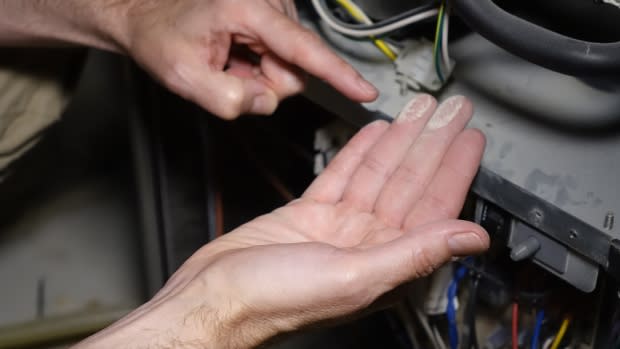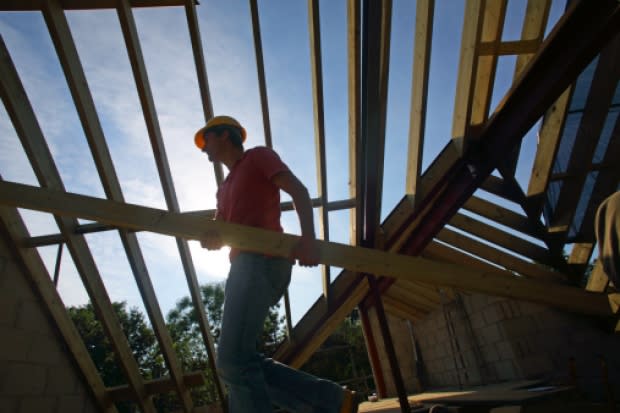Why your new home may come with a dirty, used furnace

One of the perks of moving into a newly built house is supposed to be the brand new appliances, but when it comes to furnaces, some homeowners are discovering that's not always what they're getting.
Dave Myatt found out his new furnace had already had a workout by the time he took possession of his new home in Morrisburg, Ont., last year.
It just looked like a bag of flour exploded in there. - Dave Myatt, homeowner
"I opened up the front of the furnace and it just looked like a bag of flour exploded in there," Myatt said. "The furnace filter was caked with drywall dust and debris."
An HVAC repair company found drywall dust had entered the furnace's blower and infiltrated the motor, doing possible damage to the appliance.
Myatt said he felt cheated.
"You expect to have new windows, new doors and all this kind of stuff," he said. "The last thing you'd expect to have would be a secondhand furnace, or one that's damaged."

Not uncommon
Home inspector Mike White said it's not an uncommon discovery.
"Over time, drywall dust can cause a lot of damage to the bearings inside of the furnace fans. It can grind them down and wear them out," White said.

It's legal for home builders to run the furnace during construction, and many do — something many new homeowners don't know when they purchase their homes.
Warming a home with its own furnace rather than with portable heaters during construction is cheap and convenient for home builders, according to Sandy MacLeod, president and CEO of the Heating, Refrigeration and Air Conditioning Institute of Canada (HRAI), the industry's trade association.
Little data on problem
But while experts agree the airborne debris created during drywalling and other phases of construction can reduce furnace efficiency and cause long-term damage, there's very little data on the subject, McLeod said, making homeowners' claims difficult to prove.
Every province has its own rules regulating the HVAC industry, but they typically take their cues from the manufacturer's instructions. Furnace manufacturers moved to ban the practice of running their appliances during construction in 2015, but were unsuccessful because the agreement relied on the participation of all manufacturers.
One of the holdouts was a company called Trane. In a statement, the company told CBC it complies with all laws, regulations and standards, and that its customers have not complained about damage from construction debris.
"If there were credible data indicating industry-wide regulatory change on this matter would benefit homeowners, we would welcome that data and could certainly support that approach," the company wrote in its statement.

Warranty could be void
MacLeod said other companies felt that simply updating their manuals wouldn't be enough, and wanted the regulations changed instead, but that hasn't happened.
The Canadian Standards Association started talks last year with tradespeople, manufacturers and builders to create common guidelines, but the process is slow, he said. The new standards likely won't be in place until 2021.
As a result, different manufacturers offer slightly different advice when it comes to installing and cleaning their furnace. While most advise builders to clean out the furnace and ducts before homeowners move in, that doesn't always happen, MacLeod said.
If the builder fails to follow the manufacturer's cleaning instructions, the warranty could be void, leaving homeowners on the hook if the furnace breaks down, said Karen Somerville, president of Canadians for Properly Built Homes (CPBH).
"Then you're responsible for getting your furnace fixed or getting the ductwork cleaned," she said. "Or maybe even having your furnace replaced."

While HRAI said the problem is becoming less common as builders improve their practices, Somerville said furnace problems remain the top complaint among new homeowners.
"We need to have new furnaces delivered with newly built homes," she said. "If they're going to be used furnaces, then that should at least be disclosed to people so that people could take precautions."


